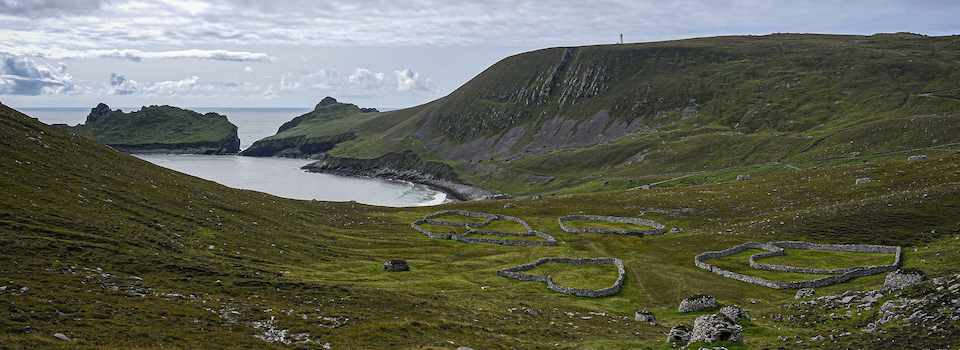
Recently I've have read in succession Philip Marsden's The Summer Isles: A Voyage of the Imagination, and Patrick Laurie's Native: Life in a Vanishing Landscape. The first narrates the writer's challenging voyage by sail northwards through the western coastal islands of Ireland and Scotland, from Dingle to Ullapool. The second narrates a year in the life of a young farmer determined to bring back older, ecologically respectful, sustainable farming methods to a small plot in Galloway, an often-neglected southwest corner of Scotland. Each in his way narrates a point of view from a chosen periphery to the urban, digital culture that pervades our times, and each questions not only the cultural sustainability of such centers (or centres!)
The tension between center/periphery is a theme in scholarship about the Late Antique period in the scholarship of Peter Brown. In that era, urban elites sought to define Christianity formally at the same time that locations and individuals on the Roman periphery —the Holy Man in the desert, the missioner in Ireland, the so-called Monophysite Christians who took Christian with them on the Silk Road towards the East; the relative seclusion of the Ethiopian Churches—that these "peripheral" figures and communities possessed the imaginative power that characterized the passing of the ancient heritages to later centuries. The rhetorical power of the elites at the centers—Rome, Constantinople, Antioch, Jerusalem—had to compete with the powerful figure in isolation, and the sense that at the periphery the future was taking shape and would come back to characterize the center.
One portion of that geographical periphery were islands past which Philip Marsden sailed; another portion was the Galloway where St. Ninian founded Whithorn before his death in ca. 432 CE. Though connected to mainland Great Britain, Galloway may have figured as Pen Rhionydd in the Arthurian tradition of the three thrones of Britain. According to A. P. Jennings in the Oxford Companion to Scottish History, the name Galloway may derive from a Gaelic phrase for "stranger-Gaidheil," a people with Gaelic and Scandinavian ancestry. Its peninsular location meant it remained removed from much of the turmoil of the Scottish Borderlands, but the people are brutally treated after the 1603 Union in the Covenanter rebellion and subsequent wars.
This sense of periphery figures in both books, but in different ways. In Marsden's book, every Irish geographical feature has a story in the ancient sagas and annals, sometimes remembered by the locals, sometimes forgotten. The Scottish ancient annals figured poorly through subsequent violent wars, and some of the "invented tradition" (in the phrase of Eric Hobsbawm, 1963), or more accurately re-invented traditions. Hobsbawm's distinction between "invented" and "genuine" traditions founders upon the fact that all traditions, genuine or not, are humanly created, unlike some kind of natural deposit, and that "reinventions" may seek to express a long-standing point of view even in the phrases of a later invention, such as a "nation." Galloway has surely felt itself on the periphery of Scotland (and England) as have the western Irish counties. Nevertheless, Laurie roots his narrative in the geographical features that have long characterized Gallovidian lives, a felt geography as vivid as that of Ireland.
The sense of periphery has a literary function similar in each book: it serves to invert a sense of value, a sense of historical perspective, the sense of what's important. Both authors are lament of the trends of depopulation and marginalization, as though Galloway or the Western Isles were to become merely some kind of touristic theme-park for wealthy urbanites who seek a rest from the stresses of London, Dublin, Brussels, Edinburgh, or elsewhere. The dignity of the people who continue, dwindle as their numbers do, to inhabit these areas—dignitas properly understood as distinctive rank and traditional claim rooted in place—give ample reason to resist the arrogance of the social planners and politicians who are utterly alienated from any sense of place at all. Indeed the kosmos is not the polis—cosmopolitan does not in fact absorb and co-opt all before it in a newly imperial manner. (Perhaps cosmopolitan national planners, central bankers, and craven politicians are the re-invented tradition of 19th-century global imperialists, with all the self-righteousness of the self-possessed.)
Like the ancient sagas and traditions, the ultimate force of both books simply says, I was here. This was here. This world was here, and this world could be again a home for dolphins, curlews, and saints. In the face of catastrophic climate change, can this land, this sea, these people endure?
